Are you wondering if you can grow climbing roses and jasmine together in your garden? It is a question I get asked a lot, and the answer is a bit more complex than a simple yes or no. However, with careful planning and attention to detail, it is possible to grow these two stunning plants side-by-side.
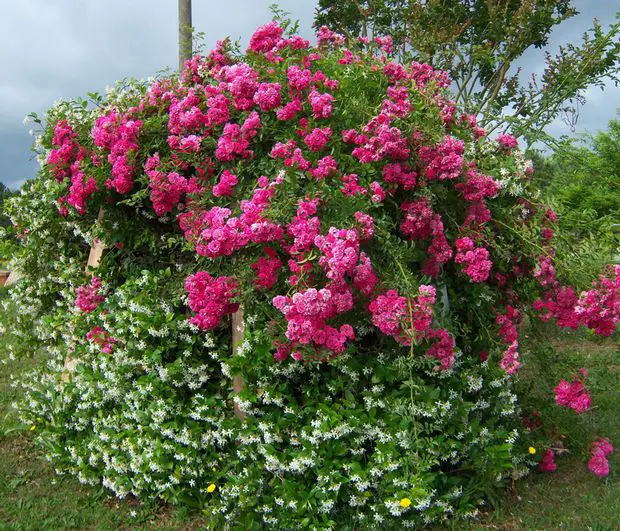
Climbing roses and jasmine are two of the most popular climbing plants, each with unique characteristics and growing requirements. Climbing roses are known for their impressive height, often reaching up to 20 feet or more.
Their long stems and clusters of blooms make them a popular choice for trellises, fences, and other vertical structures. On the other hand, Jasmine is a vine that can grow up to 15 feet or more, with delicate white or yellow flowers that release a sweet fragrance into the air. The combination of climbing roses and jasmine can create a stunning visual display and add a pleasant aroma to your garden.
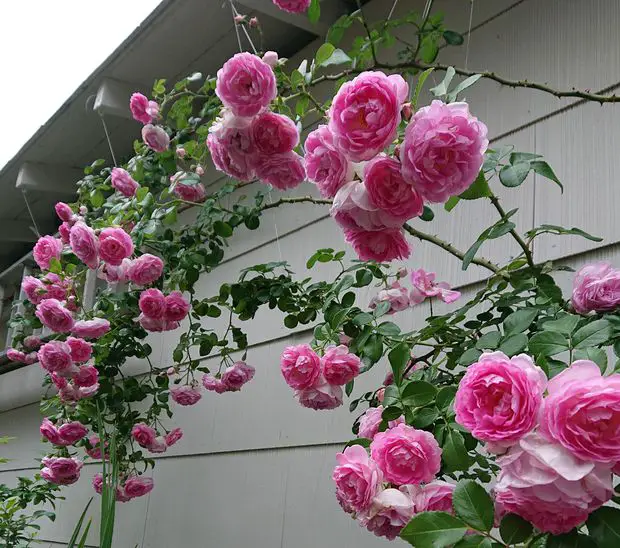
But before we get started on how to grow these two plants together, it is important to understand some of the challenges that come with this combination. For starters, both climbing roses and jasmine have different growing requirements. Roses prefer full sun and well-draining soil, while jasmine thrives in partial shade and requires moist soil.
Additionally, both plants have different blooming seasons, making coordinating their growth patterns difficult. Another challenge to consider is the potential for disease and pest problems. Roses are prone to diseases such as black spot and powdery mildew, while jasmine is susceptible to spider mites and whiteflies. Planting these two together can increase the risk of these issues, so it is important to take preventive measures to ensure the health of your plants.
Despite these challenges, there are many benefits to growing climbing roses and jasmine together. Both plants are known for their lovely scents, so combining them can create an amazing aroma in your garden. They also make a stunning visual combination, with the roses' bold colours contrasting with the delicate white or yellow blooms of jasmine.
How are jasmine and roses related?
They both belong to the Rosaceae family of flowering plants, but they have distinct differences in their genera. Roses fall under the Rosa genus, while jasmine is part of the Jasminum genus. Despite their separate identities, they do share some similarities in appearance and growth habits.
What is captivating about both jasmine and roses is their exquisite beauty and fragrant flowers. They thrive best in full sun or partial shade with well-draining soil. While we often see roses as shrubs or climbers, some jasmine varieties can also be trained to climb on trellises or walls, showcasing their versatility.
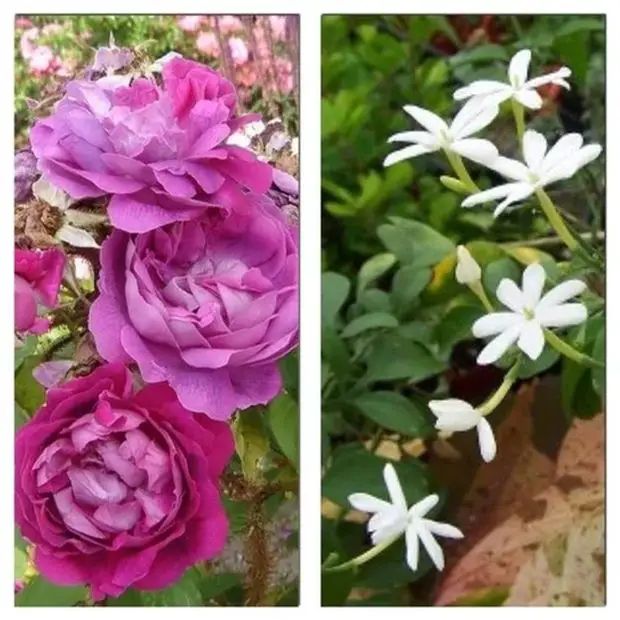
In terms of reproduction, jasmine and roses have similar floral structures, including petals, sepals, and stamens. However, they differ in the types of fruit they produce. Roses develop achenes, which are small, dry, one-seeded fruits, while jasmine produces berries or drupes that contain multiple seeds.
Exploring the connections between these two plants reveals the marvels of nature and the diversity within related plant families. It is a reminder of the intricate beauty that surrounds us.
If you want to give growing climbing roses and jasmine together a try, here are some tips based on my personal experience:
Choose the right location
Both plants require plenty of sunlight and good drainage, so pick a spot that gets at least six hours of direct sunlight each day. The soil should also be well-draining to prevent waterlogging. Additionally, make sure to choose a location with plenty of room for both plants to grow.
Prepare the soil: Remove any weeds or grass from the area and mix in some compost or well-rotted manure to improve the soil's fertility and structure.
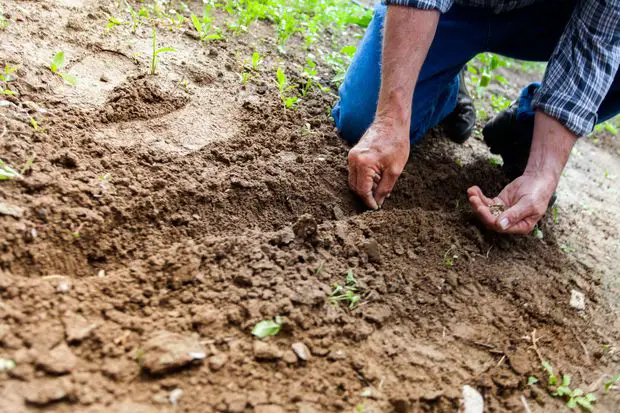
Plant the climbing roses
Choose the right variety of climbing roses. This is because some climbing roses are more vigorous than others, so opt for a variety that can hold its own against the aggressive jasmine. 'New Dawn', 'Climbing Iceberg', and 'Don Juan' are some good options.
Dig a hole that is twice as wide and deep as the plant's root ball. Place the plant in the hole and backfill it with soil. Be sure to tamp down the soil around the plant to remove any air pockets. Water the plant thoroughly after planting and keep the soil moist throughout the growing season.
Install support structures
Climbing roses and jasmine both require support structures to grow properly. Install trellises or other support structures around the plants to help them climb. Be sure to place the supports at least six inches away from the base of the plant to prevent damage to the roots.
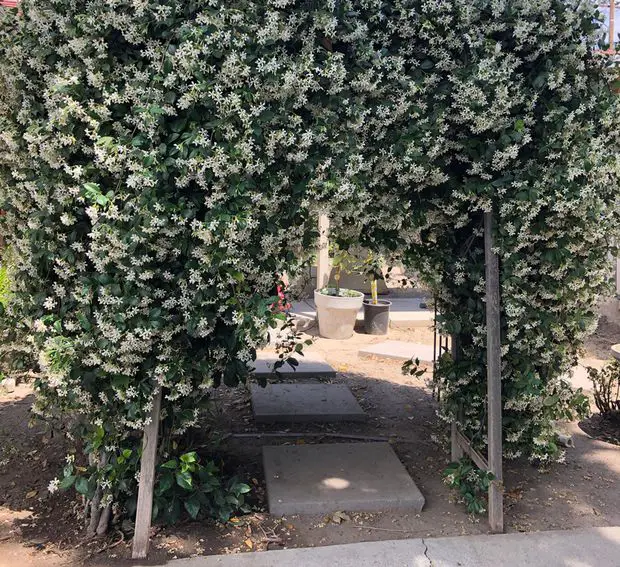
Plant the jasmine
Dig a hole that is slightly larger than the plant's root ball and place the plant in the hole. Backfill with soil and water thoroughly. Water the plant at the base to prevent water from getting on the leaves, which can promote fungal growth.
Water and fertilize regularly
Both roses and jasmine require regular watering and fertilization to thrive. Water the plants deeply once a week and fertilize them with a balanced fertilizer every two weeks during the growing season. Set aside time each week to care for the plants.
Prune regularly
Jasmine is a fast grower, so be sure to prune it regularly to prevent it from overtaking your roses. You can also train the jasmine to grow in a specific direction by tying it to a trellis or fence.
Benefits of growing climbing roses and jasmine together
Growing climbing roses and jasmine together can have several benefits. The vibrant colours of the roses can complement the delicate white flowers of the jasmine, creating an eye-catching contrast that will add visual interest to any garden.
Furthermore, these two plants can support each other's growth, with climbing roses providing a sturdy framework for the more delicate jasmine vines to grow and climb. In return, the jasmine can provide a light cover for the rose canes, helping to protect them from sunburn or frost damage. This symbiotic relationship can help both plants thrive and produce a more bountiful display of flowers.
In addition, growing these plants together can also be beneficial for pollinators such as bees and butterflies. The nectar from the jasmine flowers can attract pollinators, while the roses provide a landing spot for them to rest and gather more nectar.
Challenges of growing climbing roses and jasmine together
While there are several benefits to growing climbing roses and jasmine together, there are also some challenges that gardeners should be aware of. One potential issue is competition for resources. Both roses and jasmine require sunlight, water, and nutrients to thrive, and if they are planted too close together, they may compete for these resources. This can result in stunted growth, reduced blooms, and overall poor health for both plants.
Another challenge is the potential for disease and pest issues. Roses are known to be susceptible to several diseases such as black spots and powdery mildew, while jasmine can be affected by spider mites and aphids. When grown together, these plants may be more vulnerable to these issues, and it can be challenging to control them without damaging one or both of the plants.
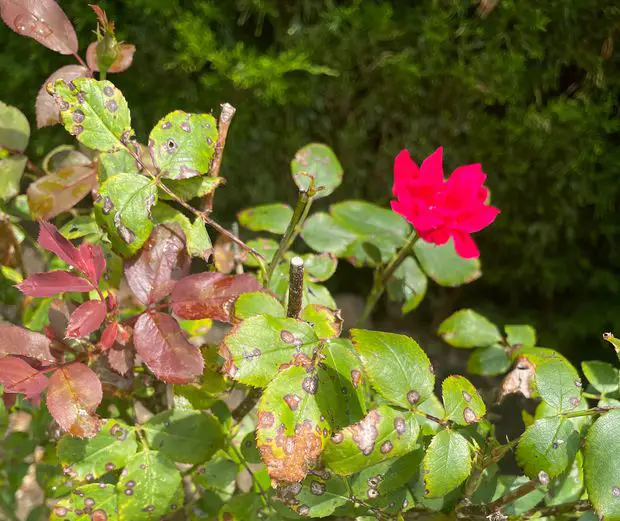
Can you combine climbing plants?
Yes, you can combine climbing plants. In fact, combining climbing plants can create a beautiful and unique garden design. When combining climbing plants, it is important to choose plants that have similar growth habits and requirements to ensure they can thrive together.
It is also important to consider the height and spread of the plants, as well as their blooming season and colour, to create a cohesive and balanced look. Some good combinations of climbing plants include roses and clematis, honeysuckle and jasmine, or morning glory and sweet pea.
It is important to provide adequate support for the climbing plants to ensure they can climb and grow properly. This can include trellises, arbours, or fences. Additionally, regularly pruning and training the plants can help maintain their shape and prevent them from becoming too unruly.
What methods can you use for growing jasmine and rose plants?
To grow jasmine and rose, there are several methods you can use depending on your desired outcome and the growing conditions available to you. Here are some common methods:
Planting from seeds: You can start growing jasmine and rose from seeds. This method requires patience and care as it takes time for the seeds to germinate and grow into mature plants.
Propagation from cuttings: This method involves taking a cutting from an existing jasmine or rose plant and rooting it to form a new plant. Make sure to take the cuttings during the right season and use a rooting hormone to increase the chances of success.
Transplanting
If you already have a jasmine or rose plant, you can transplant it to a new location. Make sure the new location has the appropriate soil type, light exposure, and drainage.
Caring for the plants
Whether you are starting from seeds or transplanting, caring for jasmine and rose plants is essential for their growth and health. This includes watering regularly, fertilizing appropriately, pruning to promote healthy growth and flowering, and protecting them from pests and diseases.
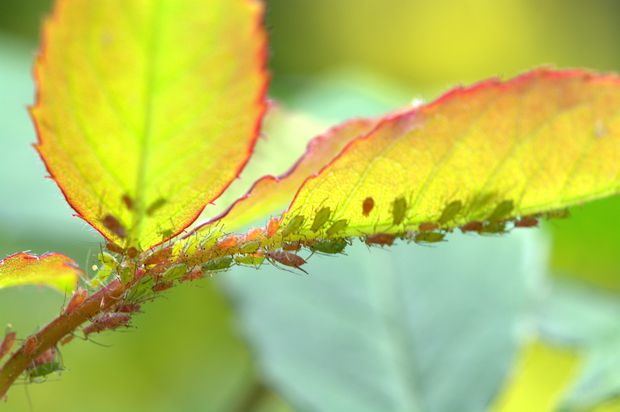
Using trellises
Jasmine and rose plants benefit from support structures like trellises, which can help them grow vertically and produce more blooms. Make sure to choose a sturdy trellis that can support the weight of the plant.
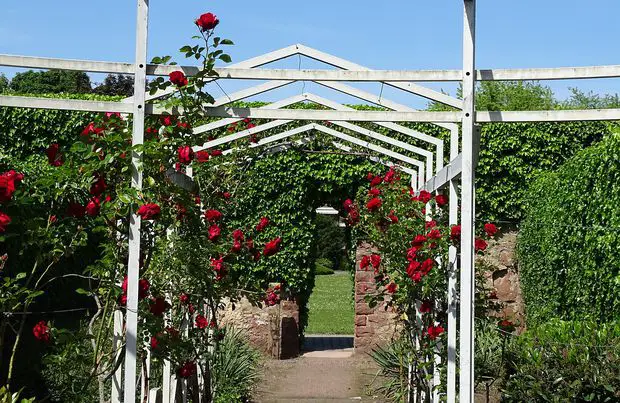
Soil Preparation
Start by preparing the soil where you plan to plant your jasmine or rose. These plants require well-draining soil with a pH between 6 and 7.5. You can improve soil drainage by adding organic matter, such as compost, and sand.
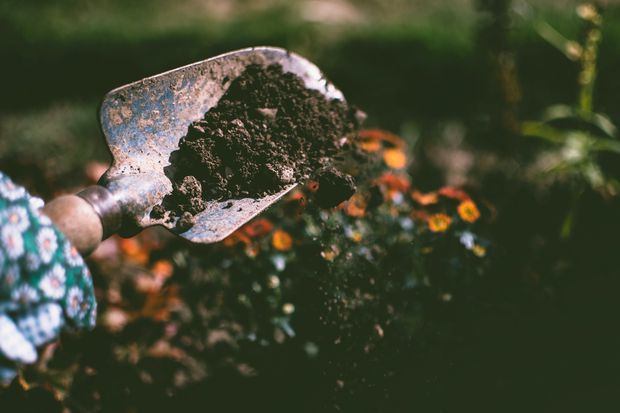
Sunlight and Watering
Both jasmine and roses prefer plenty of sunlight, so choose a spot that receives at least 6 hours of direct sunlight each day. When it comes to watering, jasmine and roses need to be kept moist but not overly wet. Water them deeply once a week, or more often during hot weather.
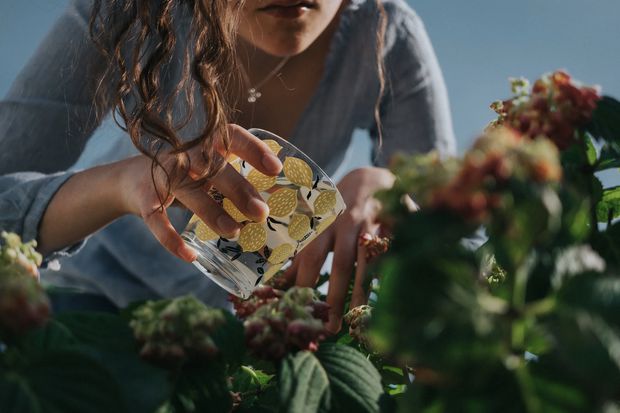
Fertilizing
Fertilize jasmine and roses every 4 to 6 weeks during the growing season with a balanced fertilizer. Alternatively, you can use a slow-release fertilizer in the spring.
Pruning
Prune your jasmine and rose plants regularly to promote healthy growth and blooming. Remove dead or damaged branches, as well as any branches that are crossing or rubbing against each other. For roses, prune in the early spring before new growth appears.
Pest Control
Keep an eye out for common pests like aphids, spider mites, and thrips, which can damage both jasmine and roses. Treat infestations with insecticidal soap or neem oil.
By using these methods, you can grow healthy and beautiful jasmine and rose plants in your garden. Remember that each plant has specific needs, so be sure to research and follow specific guidelines for the variety you are growing.
What do climbing roses climb best on?
Climbing roses are a beautiful addition to any garden, adding height, colour, and fragrance to trellises, walls, and other structures. When it comes to choosing the best support structure for climbing roses, there are several options to consider.
One of the best support structures for climbing roses is a sturdy trellis. A trellis provides the roses with vertical support, allowing them to climb upward and spread out horizontally. A trellis made from sturdy wood or metal will provide the roses with the support they need to grow and thrive.
Another great option for climbing roses is a pergola. A pergola is a garden structure that consists of vertical posts and horizontal beams, creating an overhead canopy. Climbing roses can be trained to grow up and over the pergola, providing a beautiful and fragrant canopy of blooms.
Climbing roses can also be trained to grow up walls or fences. For this type of support, it is important to choose a structure that is strong enough to support the weight of the rose plant and its blooms. A brick or stone wall is an ideal option, as is a sturdy wooden fence.
How do rose and jasmine reproduce?
Both rose and jasmine can reproduce sexually through cross-pollination or asexually through vegetative propagation. Sexual reproduction in roses involves the transfer of pollen from the stamen of a flower to the stigma of another flower, leading to the formation of seeds. The seeds can then grow into new rose plants with genetic traits that are a combination of the parent plants.
Cross-pollination in roses is often done by bees, butterflies, or other insects. Jasmine also reproduces sexually through cross-pollination, which occurs when the pollen from the anthers of a flower is transferred to the stigma of another flower. After successful pollination, the ovules in the ovary of the flower are fertilized and develop into seeds. These seeds can then grow into new jasmine plants.
In addition to sexual reproduction, both rose and jasmine can also reproduce asexually through vegetative propagation. This method involves using a part of an existing plant, such as a stem or a leaf, to grow a new plant. In roses, vegetative propagation is commonly done through cuttings, where a stem is removed from the parent plant and planted in soil.
In jasmine, this can be done through layering, where a stem from the parent plant is bent down and buried in soil, allowing it to develop roots and grow into a new plant. Vegetative propagation allows growers to produce plants that are genetically identical to the parent plant, ensuring that desirable traits are passed down to the next generation.
Both rose and jasmine can reproduce sexually through the pollination of flowers and the production of seeds, or asexually through vegetative propagation.
Sexual reproduction occurs when the flowers of the rose or jasmine are pollinated by insects, such as bees, or by the wind. The pollen from the male parts of the flower fertilizes the female parts, resulting in the production of seeds. These seeds can then be planted to grow new plants.
Asexual reproduction, on the other hand, involves growing new plants from existing plant material, rather than from seeds. One common method of vegetative propagation is by taking stem cuttings. For example, a small branch or stem from a mature rose or jasmine plant can be cut and placed in soil, where it will develop roots and eventually grow into a new plant.
Another method of vegetative propagation is by layering. This involves bending a low-growing branch of a rose or jasmine plant down to the ground and covering it with soil. Roots will develop from the buried portion of the stem, allowing it to grow into a new plant.
Overall, both sexual and asexual reproduction can be used to propagate roses and jasmine, depending on the desired outcome and the preferences of the grower.
Is rose and jasmine propagated by grafting?
Both roses and jasmine can be propagated through grafting, but it is important to note that there are other methods of propagation as well.
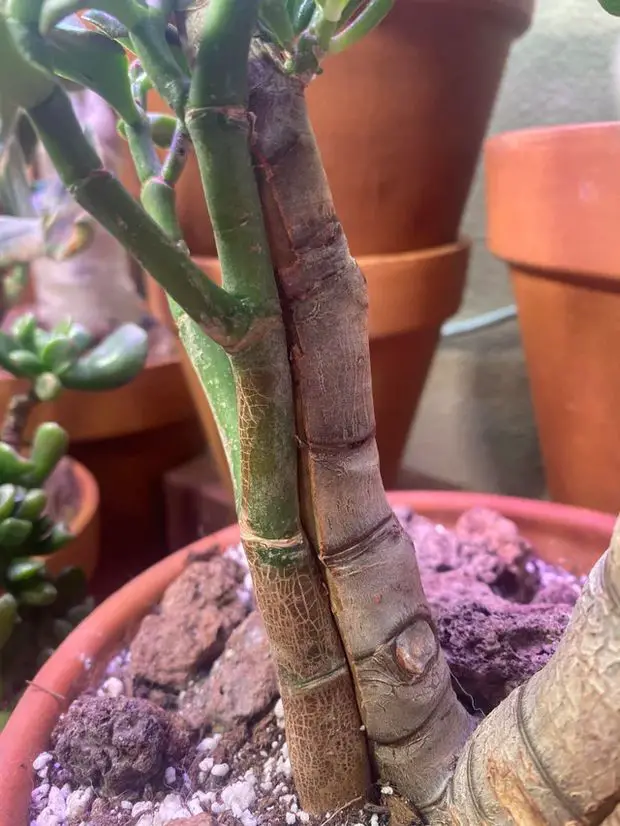
Grafting involves taking a cutting, or scion, from a desired rose or jasmine plant and attaching it to the rootstock of another plant. The two pieces are joined together and held in place until they grow together and form a new, grafted plant. This method is often used in commercial horticulture to produce large numbers of identical plants quickly and efficiently.
It can also be used to combine desirable traits from two different plants, such as disease resistance or improved growth habits. However, grafting is not the only method of propagation for roses and jasmine. Both plants can also be propagated through cuttings, layering, and seed propagation.
Propagation through cuttings involves taking a small piece of stem or branch from a mature plant and rooting it in soil or water until it develops roots and can be transplanted to a new location. Layering involves bending a low-hanging branch of a mature plant to the ground, where it is covered with soil and allowed to root before being separated from the parent plant.
Seed propagation, as the name suggests, involves collecting and planting seeds from mature plants. Each method of propagation has its own advantages and disadvantages, and the best method for a particular plant or situation will depend on a variety of factors, including the desired outcome, the time and resources available, and the specific needs of the plant being propagated.
Final Thoughts
In conclusion, growing climbing roses and jasmine together is a great way to add beauty and fragrance to your garden or outdoor space. While there are some challenges, with the right tools and techniques, you can create a stunning display that will bloom year after year. Just remember to give both plants enough space, monitor for any signs of disease or pest issues, and care for them regularly.
